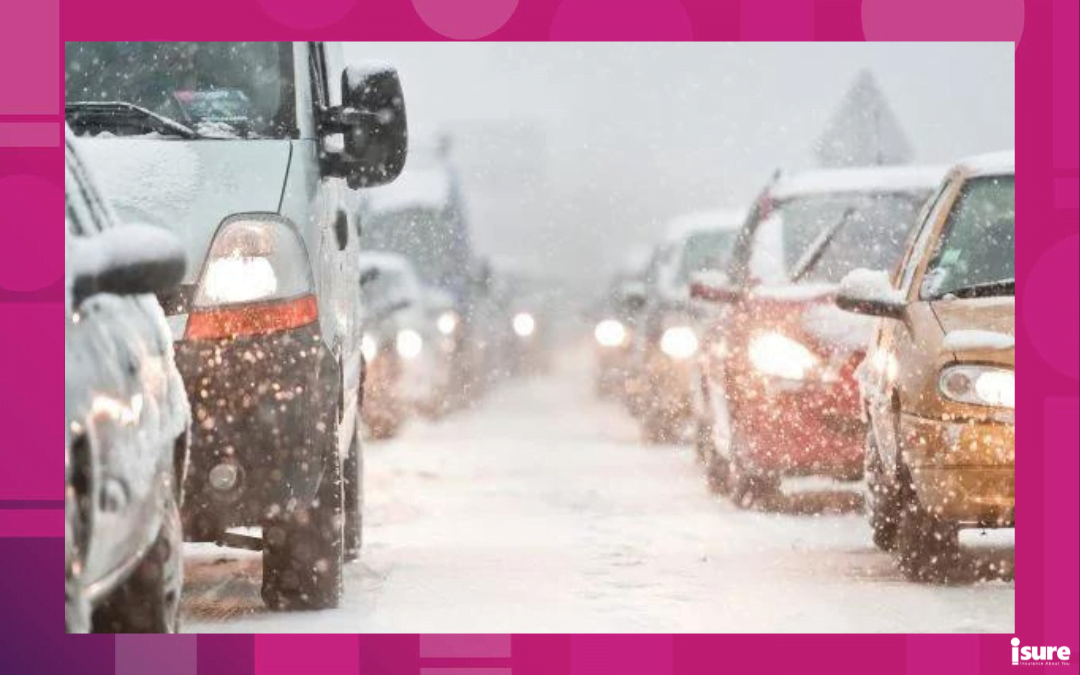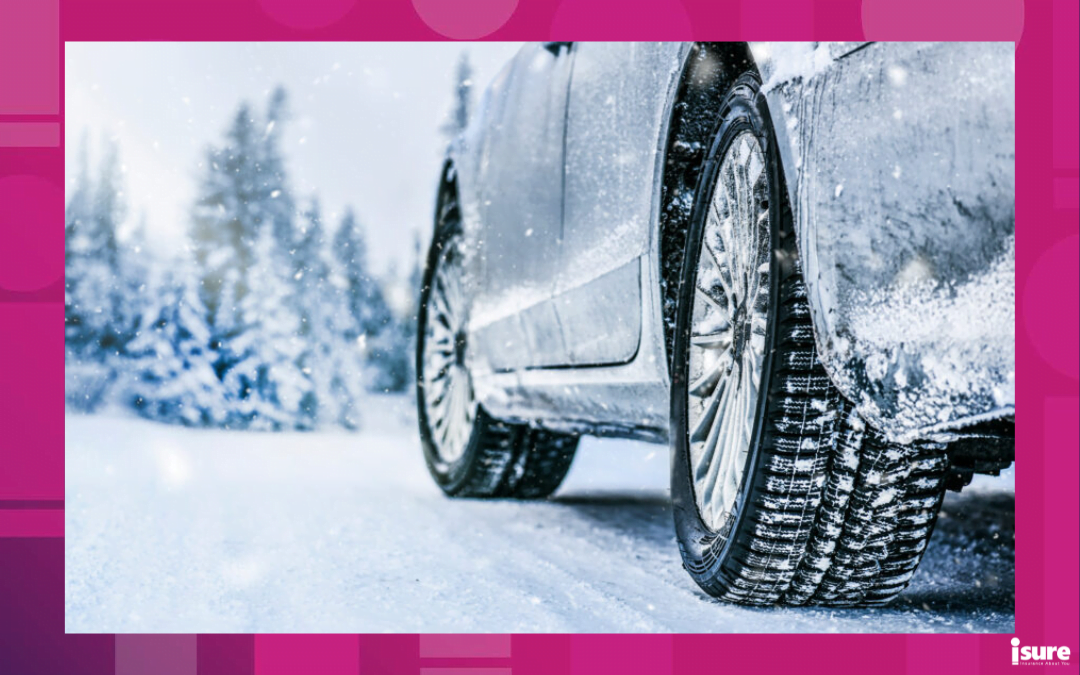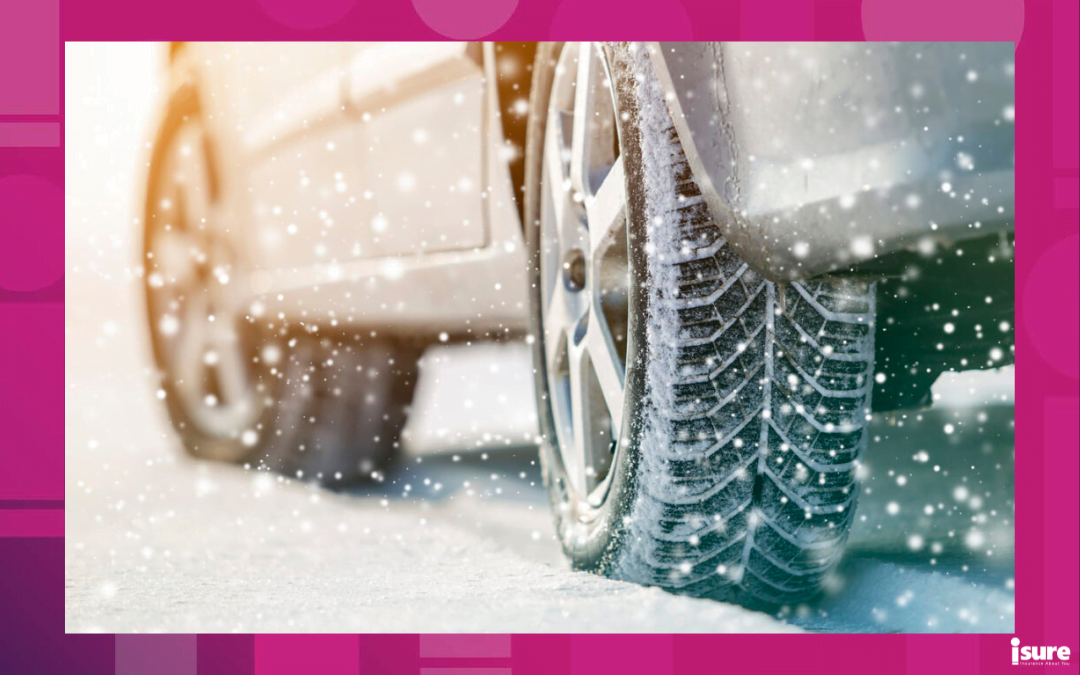Winter driving can often deliver a mixed bag of road conditions. Some days, the roads may be dry and the skies clear, while others may be snowy with high winds and black ice. As a driver, you need to be prepared for all of these winter driving conditions—often in rapid succession with other challenges. We have created a list of the most important winter driving tips to help you better prepare for these potentially difficult driving scenarios. If you follow these winter driving tips in the colder months, you’ll statistically be better equipped to handle any condition that Old Man Winter throws at you! Remember, when the roads are bad, it is always important to stay home! Getting behind the wheel can lead to life-threatening accidents if you aren’t properly prepared.
1. Get winter tires
Insurance providers may offer a discount for drivers who have winter tires. Not only does having them save you on your insurance (up to 5% on your premium!), but they cut your chance of accidents due to better traction and braking distance. Some companies require you to have winter tires on your vehicle(s) from November 1st to April 1st to qualify for the insurance discount. A common question is if all-season tires qualify for this discount and the short answer is: No. Why? The Ontario government suggests that all-season tires can start to lose their grip on the road at 7 degrees Celsius or lower. Your isure insurance broker can assist you in finding the best winter tire insurance discount!
2. Look further ahead than normal
By being aware and cautious of what is happening further down the road, you will better react to winter driving’s changing conditions. While this may seem like common sense advice, many drivers only look as far as the car in front of them. When it’s winter, the sun goes down much earlier than usual. If you find yourself struggling to look further ahead when it is dark out, consider this a good time to replace or upgrade your front lights. Though costly, it is definitely worth being able to see clearly. This is a tip that will help to ensure winter driving safety!
3. Have a winter driving survival kit handy
Having a winter driving survival kit in your car will give you peace of mind if you do get into trouble. Your kit should include items that will help you if you become stuck, items that will keep you warm, and resources to stay in your care for 24-48 hours. Some of the more obvious items include sand or salt, a snow brush, extra Antifreeze, a tow rope, jumper cables, a fire extinguisher, and road flares. Other suggestions include food, water, a blanket, extra clothing, a first aid kit, a small shovel, candles/matches, a flashlight, a map, a radio, and a whistle.
4. Defrost your windows properly
Knowing your car’s system and how to defrost your windows properly is crucial. We all know just how annoying it can be to defrost your car. This is especially true during those dark, winter mornings on your way to work! However, windows that aren’t defrosted can lead to dangerous driving conditions. Allow extra time for your windows to defrost before you begin driving. Keep in mind that air conditioning will reduce the humidity that causes fogging in your car.
5. Clear ALL snow from your car
In many situations, people tend to get up in the morning and simply clear their windows. At isure, we understand nobody wants the hassle of clearing off your car during those cold mornings. However, those overnight snowfalls can be more hazardous to your car than you think. Leaving snow on the roof of your vehicle can be very dangerous for the cars driving behind you. Make sure to clear ALL of the snow from your car with a snow brush before winter driving. According to the Ontario Provincial Police, you can receive a ticket with a $110 fine if you have an obstructed view caused by excess snow.
6. Check your vehicle fluids
Make sure to keep the crucial fluids in your car topped up, such as Antifreeze, brake fluid, and engine oil. Though this is something you should be keeping up with year-round, the cold days make this task more important than ever. When possible, make sure to carry extra in your trunk. Windshield washer fluid tends to be used more frequently in the colder months due to dirty, slushy snow. Even more, be sure to keep your gas tank at least half full to reduce moisture in your fuel system.
7. Check tire pressure every season and pump your tires
For every 6 degrees Celsius that the temperature drops, you will lose 1 PSI (pounds per square inch) in your tires. As the weather shifts every season, be sure to check your tire pressure. Inflate your tires to make up the difference lost, especially as the temperature drops below zero. Making sure your tires are in tip-top shape is crucial when it comes to staying safe on the roads. With this in mind, it is important to remind everybody that winter tires are extremely important to have before hitting the road during the snowy season.
8. Always run your lights
Day running lights are often fine during normal conditions; however, you should run your main lights during winter. Not only does it better illuminate the roads for yourself, but it helps other drivers to see you as well. Everybody knows just how difficult it can be to see during a snowstorm. With this in mind, you should be taking every precaution necessary to see clearly and have others see you.
9. Don’t use cruise control
You need to be aware of the road conditions, and cruise control can lull you into a false sense of security. Instead, avoid using it altogether while winter driving and actively monitor changing road conditions.
10. Practice slide recovery
If you’ve never experienced losing control before, get some practice before winter driving. Head to an empty parking lot and practice skidding and regaining control. The experience can be terrifying when you’re in it unexpectedly, but if you know what to expect, you’ll be able to handle the situation more appropriately. Avoid sudden turning of the steering wheel or heavy, sudden braking.
11. Avoid bridges if possible
Bridges have more surface area, which means that they cool down far faster than a regular road. As such, bridge conditions often become bad even when all the other roads are fine. Slow down when you come to any bridge or avoid familiar routes that may have one (if possible.)
12. Slow down!
Winter driving should always come with an unwritten rule of adding 15 minutes to every hour. Slowing your speed is one of the best ways to handle winter driving, allowing you more time to react and better traction control. Also, keeping a safe distance from the vehicle in front of you will help reaction time. Managing your speed is one of our best winter driving tips! Remember, no destination is worth risking your or your passenger’s lives over to get to. If you think you are going to be late to your destination, always call ahead. In most scenarios, people will always be understanding of the weather.
13. Wear appropriate driving footwear
Clunky winter boots aren’t well-designed for winter driving—they slow your reaction time and can be a hazard. Instead, consider having a pair of driving shoes that you change into, as needed. This can range from a pair of sneakers you keep in your car, to a less chunky pair of boots that you can wear when the weather isn’t as brutal. Being able to stop, go, and slow down when necessary is crucial when it comes to keeping you and your passengers safe on the roads.
We hope that these tips help you better understand being safe behind the wheel. Remember, the biggest tip of all is to have good car insurance in case something unexpected happens. Like the weather, driving can bring on even the most unexpected. Are you in the market for new car insurance? If so, why not check out isure? We have some of the best prices when it comes to premiums as well as customer service you can always rely on. Contact us or request a quote today!





